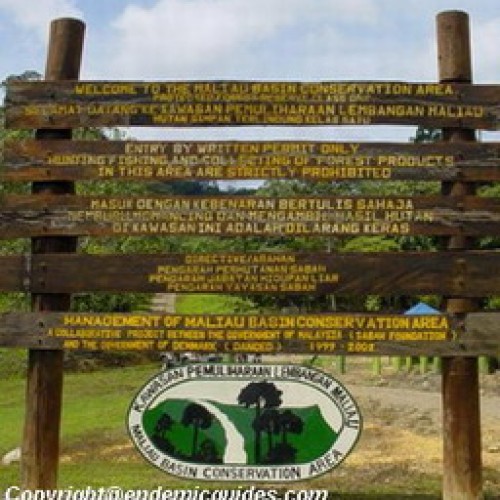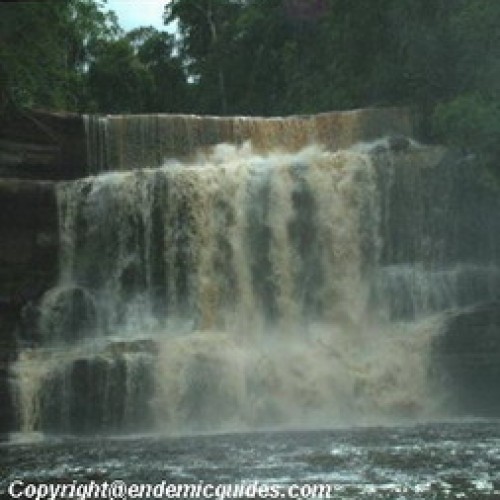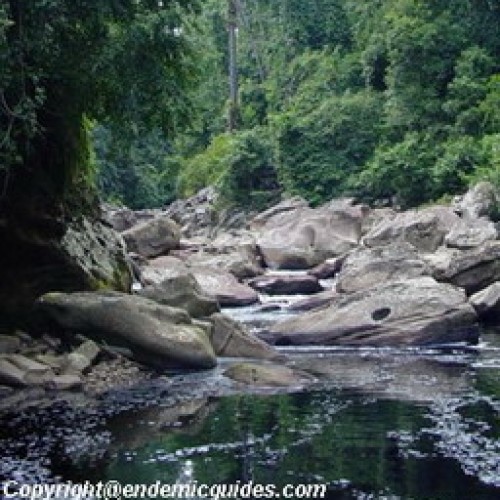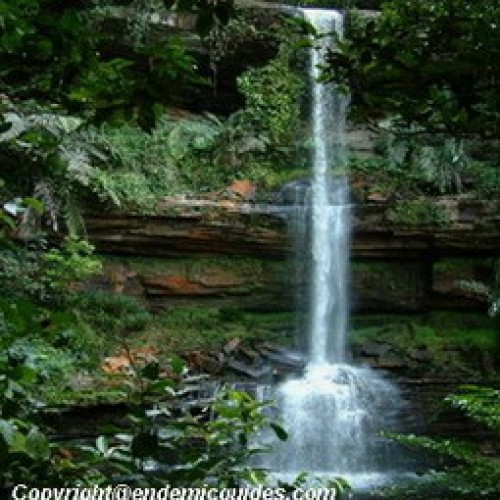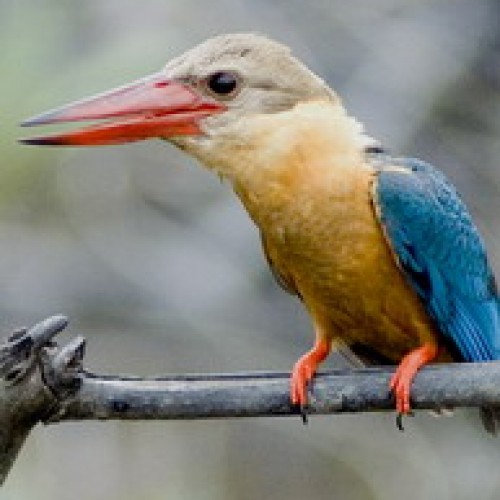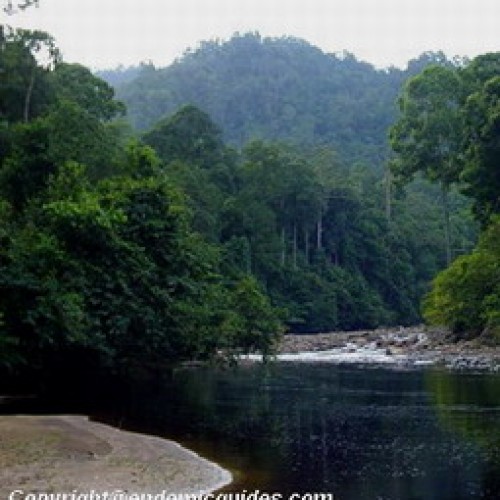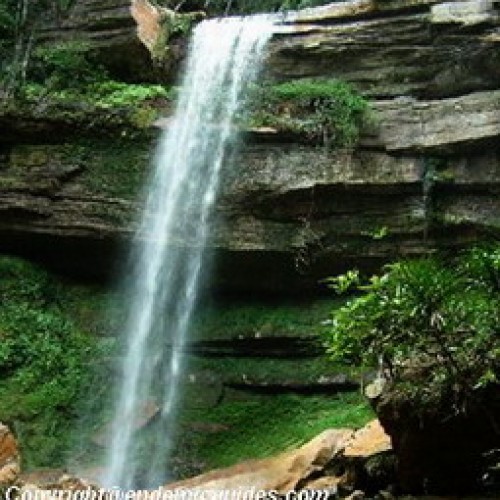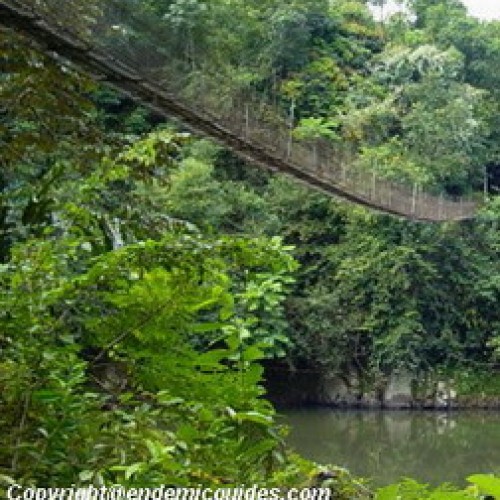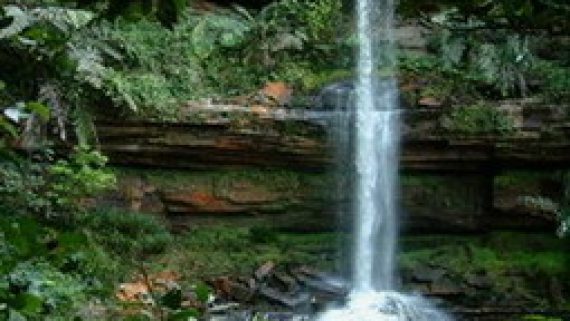Maliau Basin Forest Reserve, Sabah
Introduction & History
It is like a big basin with a mile of lush green forest inside. On top of Maliau Basin, it’s a montane forest with cool weather.
The 588.4 km² Maliau Basin Conservation Area, encompasses the whole of Maliau Basin itself (390 km²), plus an additional 198.4 km² of forested land to the east and north of the rim, including the fabled Lake Linumunsut (Sabah’s only true lake), formed by a landslide blocking a small tributary of the Pinangah River.
While this entire region is rugged, the saucer-shaped Maliau Basin is distinguished by its almost circular perimeter, sharply delimited on all sides by cliffs or very steep slopes, making it insurmountable on foot from most directions. The highest point is on the north rim, at over 1,675 m in elevation, but has yet to be accurately surveyed. Resembling a volcanic caldera, the 25 km diameter Basin is in fact a sedimentary formation comprised mainly of gently inclined beds of sandstone and mudstone.
The 390 km2 Maliau Basin was originally part of a 10,000 km2 timber concession belonging to Yayasan Sabah (the Sabah Foundation), an organization formed in 1966 through an Enactment by the State Legislative Assembly, with the objective of improving the standard of living and education of Malaysians in Sabah. In 1981 Yayasan Sabah voluntarily designated Maliau Basin as a Conservation Area for the purposes of research, education and training, along with Danum Valley Conservation Area further to the east.
This entire region is rugged, saucer-shaped Maliau Basin is distinguished by its almost circular perimeter, sharply delimited on all sides by cliffs or very steep slopes up to 1,500m in height, thus making it insurmountable on foot from most directions. The highest point is thought to be Gunung Lotung on the north rim, which is over 1,600 m in elevation, but has yet to be accurately surveyed. Resembling a volcanic caldera, the 25 km diameter Basin is in fact a sedimentary formation comprised mainly of gently inclined beds of sandstone and mudstone.
The Basin represents a single catchment, and is drained by a set of radiating tributaries of the Maliau River, one of which descends a magnificent series of waterfalls, known as Maliau Falls. Numerous smaller waterfalls have also been discovered throughout the Basin. The Maliau River then drains through a gorge out of the southeast of the Basin into the Kuamut River, which in turn feeds into the Kinabatangan, the longest river in Sabah. The water here is tea-coloured and acidic, due to the tannins leaching out of the peaty leaf litter. The stunted montane heath forest occurs on flatter areas of the Basin on nutrient poor acidic soils.
The basin was ‘officially discovered’ in 1947, by a pilot. But it was not until 1988 that the first major scientific expedition organised by Yayasan Sabah and WWF Malaysia took place. However, international pressure became increasingly strong to preserve the world-unique area. In 1997 the Maliau Basin Conservation Area was upgraded by the Sabah state government to a Protection (Class One) Forest Reserve.
A four-year project was initiated by Yayasan Sabah in 1999 collaboration with DANIDA (Danish International Development Assistance) to prepare a management plan for the area and to establish a new facility, the Maliau Basin Studies Centre, at the southeast edge of the Basin, for conservation, research, education and ecotourism purposes.
In 2000 intensive field surveys started as part of the preparation of the Maliau Basin Conservation Area Management Plan. The objective of the project was to secure the conservation of Maliau Basin for the benefit of Sabah, Malaysia and the international community.
The first major expedition to Lake Linumunsut in the northern part of Maliau was conducted in 2001. By now, only about 25% of the total area has been mapped, and less than 10% have been studied intensively. Yet, the Basin has already yielded more new species of plants and animals than many other places over many more years of studies.
In 2002 we celebrated the ground breaking for the Maliau Basin Studies Centre Site by HRH Prince Henrik of Denmark and Tan Sri Datu Khalil bin Datu Haji Jamalul, the Director of Yayasan Sabah.
The Murut, who traditionally inhabit the area but have never settled in the forbidding basin have since time immemorial organised a yearly hunting expedition to the rich grounds of Maliau, and knows of the seven-tiers waterfall, the Maliau Falls that forms its heart – but they also know of many more stories and legends that surround the place.
Flora and Fauna
Flora
Over 1800 species of plant have so far been identified, including nine species of pitcher plant and at least 80 kinds of orchid, several of which are new records for Sabah and also the bio-symbiotic Ant plants.
The Maliau conservation area contains about 74 dipterocarp species. Dipterocarp forest is found mostly on the Basin’s outer flanks and in the interior valley bottoms, and is rich in fruit trees.
The orchids are especially diverse and accessible in the heath and short-heath forest plateau. It was noted that the greatest flowering of orchids there was in April-May.
There are also always rhododendrons flowering in the heath forest, the commonest probably being R. bomeense, R. durionifolium, and R. javanicum, and their various subspecies.
Nepenthes can be seen at the heath forest. About 9 species can be found at the Maliau conservation area. These include Nepenthes cf. mirabiles, N. gracilis, N. hirsuta, N. lowii, N. reinwardtiana, N. stenophylla, N. tentaculata, N. veitchii and N. veitchii X N. stenophylla.
The rare Rafflesia tengku-adlinii has also been found in Maliau Basin, one of only two known localities in Sabah, a parasite on the Tetrastigma liana. The liana itself appears to grow in heavily disturbed sites and two places where the liana and parasite can be found are the trail down to Bambangan Camp, and in the disturbed forest on the hill behind Rafflesia camp.
Fauna
Big mammals that have been recorded in the Forest reserve included red barking deer, Bornean yellow barking deer Sambhar deer and bearded pig. There were no signs of banteng and elephants within the borders of forest reserve apart from a small comer around Belian Camp area where a small herd of bantengs were observed in September, 2000. Bantengs can be commonly seen outside the southern boundary. There is also the sighting of Rhinos in Camel Trophy Hut.
For small mammals (monkeys, civets, rats, shrews, porcupines, pangolin, etc.), about 21 species from 7 families were recorded. Of the 17 rat species in Borneo, 11 were recorded here. Interestingly, no squirrels were recorded.
An impressive list comprising some 270 bird species has been recorded, including Bulwer’s Pheasant, Giant Pitta, Bathawk, Bornean Bristlehead and eight species of hornbills, together with several rare montane species, otherwise found only on Mount Kinabalu and Trus Madi. These included 24 species of birds which were new records for Maliau Basin, 5 Bornean endemic species and 2 migrant species. About 32 species from 5 families of frogs were recorded. Maliau served the largest concentration of the helmeted hornbill in the late evening when you can hear loud croaking sound.
Others among the 82 mammal species so far confirmed include Clouded Leopard and Malayan Sunbear, argus pheasant, silver leaf monkey, orang utan, elephants, sumatran rhinos, Bulwer’s pheasant, oriental darter, and peregrine falcon.while on the fringes of the Conservation Area, Seledang (tembadau) and the elusive Bay Cat have been seen. There are plenty of mousedeer, hornbills, monkeys that can be seen almost every day.
While the acidic waters of Maliau Basin are proving to support relatively few fish species, more than 30 species of amphibian have been found, including a frog which makes its home in pitcher plants.
Amongst the multitude of invertebrates, at least two species are new to science, a water beetle Neptosternus thiambooni and a crab Thelphusula hulu have been discovered.
Attractions and activities
Maliau Basin Conservation Area is ideal for adventure jungle trekking & wilderness experience, bird watching, photography and night walks, night drives to spot nocturnal wildlife along the access roads, swimming and recreation.
The famous seven-tier Maliau Waterfalls could be reached within a day. Equally memorizing are waterfalls such as Giluk Falls, Rafflesia Falls and Alin Falls.
Visitor also can enjoy the excitement with night safaris with the guideden of park ranger. You can get to gape at nocturnal wildlife.
Visitors to Maliau Basin Conservation Area are welcome, but access is strictly controlled and permission to enter must be obtained in advance from Yayasan Sabah. It must be remembered that Maliau Basin is a remote, rugged and isolated area with limited access, communication and safety facilities.
Getting there and away
Maliau Basin entrance is situated about 40 km east of Pensiangan in southern Sabah. It is now easily accessible from Tawau and Keningau. It is about 190 km from Tawau. From Keningau, it takes about 3 hours. The best mode of transport is by 4WD.
Maliau Basin Conservation Area is accessible either via Tawau or Keningau, a 4-5 hours journey from either town. Four-wheel drive is essential as the latter part of the journey is on logging roads.
At Maliau Basin Security Gate, where a Visitor Reception and Information Building, an access road leads to Agathis Camp and Maliau Basin Studies Centre.
Gate passes can be obtained from the Yayasan Sabah Maliau Secretariat offices in Kota Kinabalu or Tawau. Gate passes for each vehicle, including the name of passenger must be shown at the Security Gate before entering.

